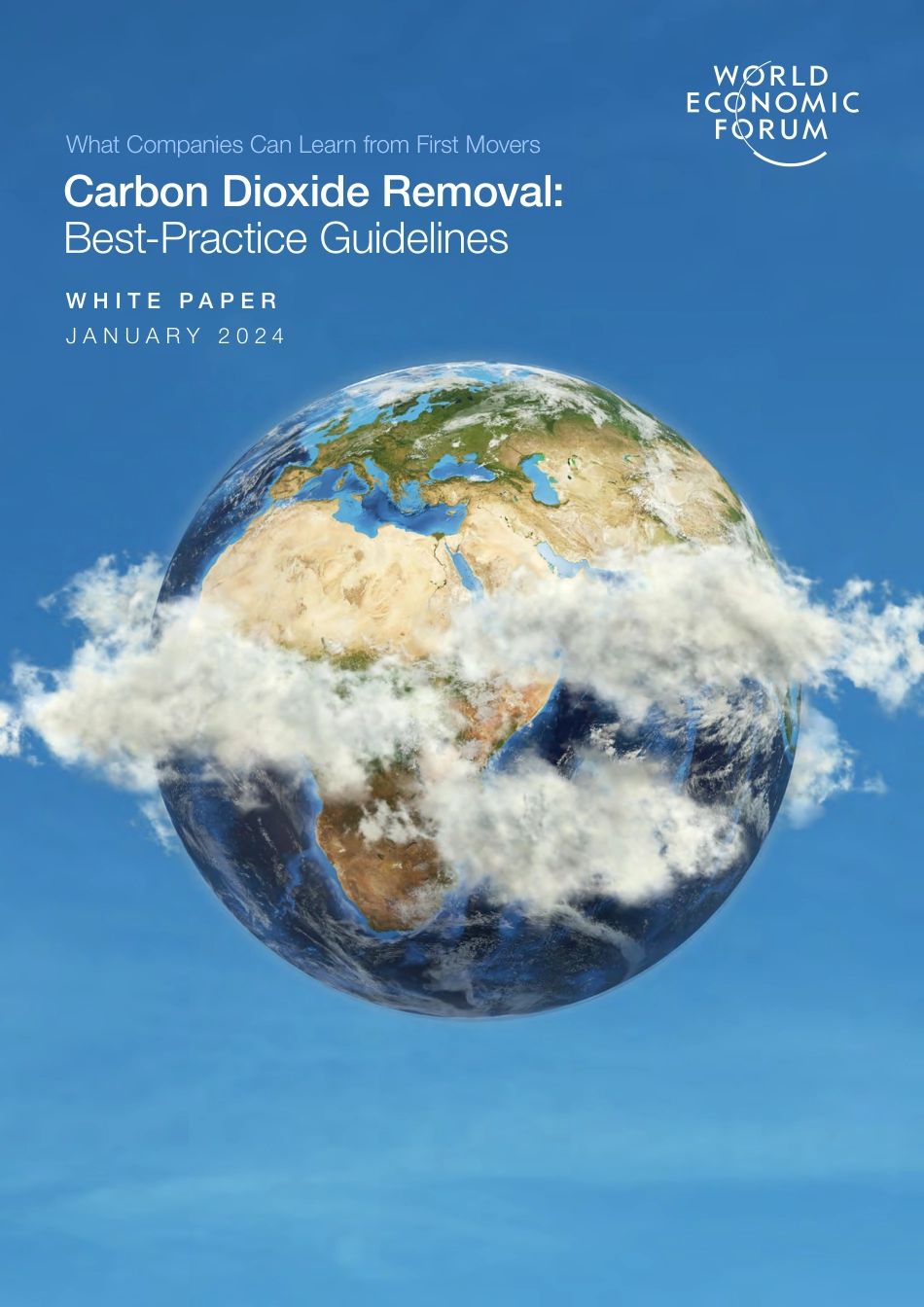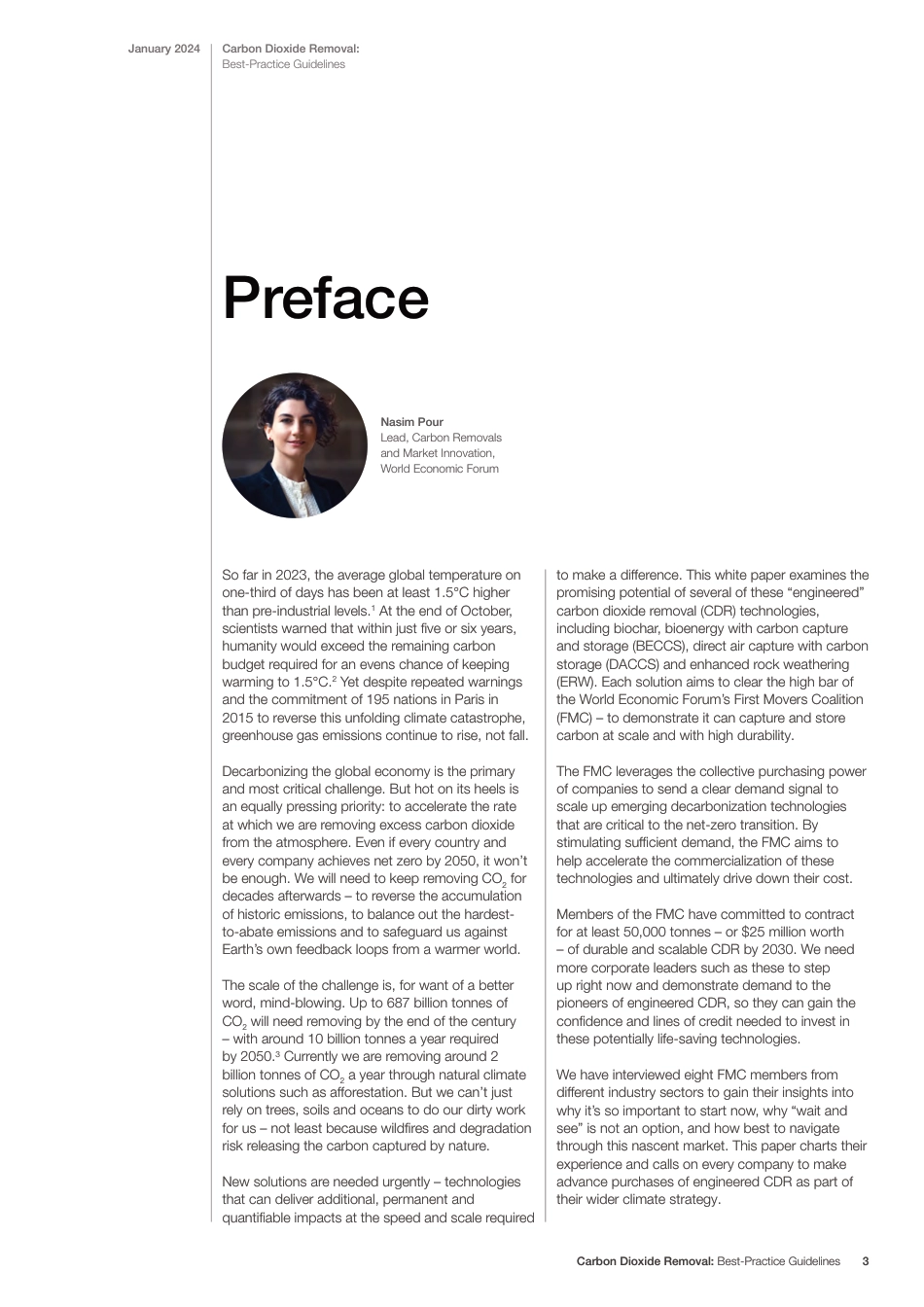Carbon Dioxide Removal: Best-Practice GuidelinesW H I T E P A P E RJ A N U A R Y 2 0 2 4What Companies Can Learn from First MoversContentsImages: Unsplash, Getty Images© 2024 World Economic Forum. All rights reserved. No part of this publication may be reproduced or transmitted in any form or by any means, including photocopying and recording, or by any information storage and retrieval system.Disclaimer This document is published by the World Economic Forum as a contribution to a project, insight area or interaction. The findings, interpretations and conclusions expressed herein are a result of a collaborative process facilitated and endorsed by the World Economic Forum but whose results do not necessarily represent the views of the World Economic Forum, nor the entirety of its Members, Partners or other stakeholders.PrefaceExecutive summary1 Overview of the challenge1.1 Why carbon removal is essential to achieving the Paris goal1.2 Status of carbon removal technologies1.3 Purpose of this report2 The engineered CDR landscape2.1 Carbon removal technologies available in the market2.2 Quality features of engineered CDR3 Why engage in engineered CDR now?3.1 It’s good for corporate climate strategy3.2 It provides business opportunities3.3 Leadership is essential – ‘wait and see’ is not an option3.4 Engineered CDR brings co-benefits, too3.5 A mix of natural-climate solutions and engineered CDR is needed4 How to access the nascent market for engineered CDR4.1 How to secure the budget4.2 Choosing the right market access model4.3 Communicating CDR performance in-house and outside the companyConclusionAppendixContributorsEndnotes34668899121414151718192121242628293031Carbon Dioxide Removal: Best-Practice Guidelines2PrefaceSo...



